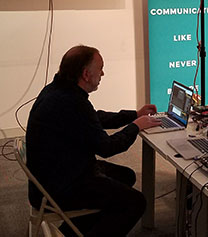The Demise Of Analog Phone Lines

The familiar saying "out with the old and in with the new" became popular in our vernacular in 1976. This rings true with the phasing out of analog phone lines. Although they have served their purpose, the upkeep costs and reliability of this technology make it no longer an option for businesses and even residential homes. When working with live onsite audio events from corporate auditoriums and venue conference centers, webcasts relied heavily on the use of analog lines to provide the audio for our webcast participants. Ambient line noises, busy signals, sudden disconnects and a myriad other issues often accompanied the stress involved in the use of these lines. Thankfully, the slow death of analog phone lines have finally reached an end but we are embracing the future of webcast connectivity.
POTS lines (Plain Old Telephone Service) infrastructure has become Prehistoric, Obsolete, Tenuous, and Scarce. Today less than 20% of households have active analog lines and most hotels and event venues have had them removed entirely. Billions of dollars are spent every year to maintain old telephone networks, and the rate of return on this service offers no incentive for companies, venues or even telephone companies themselves to install or maintain these lines. The only real pro for a POTS line is that they do not go out when homes or businesses experience a blackout. The copper-wired lines receive their power directly from the phone company. These companies have extensive power backup systems that initiate during outages, allowing users to maintain their service.
Analog lines have been used for years as the backbone of our live audio webcasts. They fed audio to our encoding center from hundreds of locations and have served their purpose successfully. As venues have improved their infrastructure, webcast connectivity has adapted. We have had events in large corporate board rooms and convention centers, where phone lines needed to be run down several floors and across hallways in order to reach our tech tables. We have also had clients reconnect deactivated lines (at exorbitant costs to them) just to be able to feed audio over to our encoding center, to stream the events for our webcasts. This arrangement was never ideal but we worked with the limitations of the venue and technology.
Today Zoom, Skype and other teleconference options, along with hybrid digital encoders, have provided a more convenient, clear and stable connection for our onsite webcast services. Should facilities offer the use of analog lines at their venues, we only opt to use them for connection redundancy.
These innovations have allowed us to work more seamlessly with venues and clients to broadcast events with cleaner audio and more reliable connectivity. It has been a long and stressful ride with these twisted copper lines, but time and tide wait for no man.

ABOUT THE EXPERT: Richard Dziegielewski
Richard Dziegielewski, Webcast Producer. Richard joined the team in 2002 and has seen it grow exponentially. He provides the utmost in production expertise to MultiVu’s prestigious clients. He has produced events with celebrities and executives of multinational corporations. Richard lives in New Jersey with his wife and children where he coaches basketball and is a Cub Scout leader.
About MultiVu
MultiVu, a Cision/PR Newswire division, produces and places compelling content strategically across multiple channels globally to deliver targeted results and drive desired engagement. Created in 2002 from network news veterans and media relations professionals, MultiVu has grown into a content creation and media strategy company, leading in the broadcast communications industry. More information can be found on www.multivu.com.




